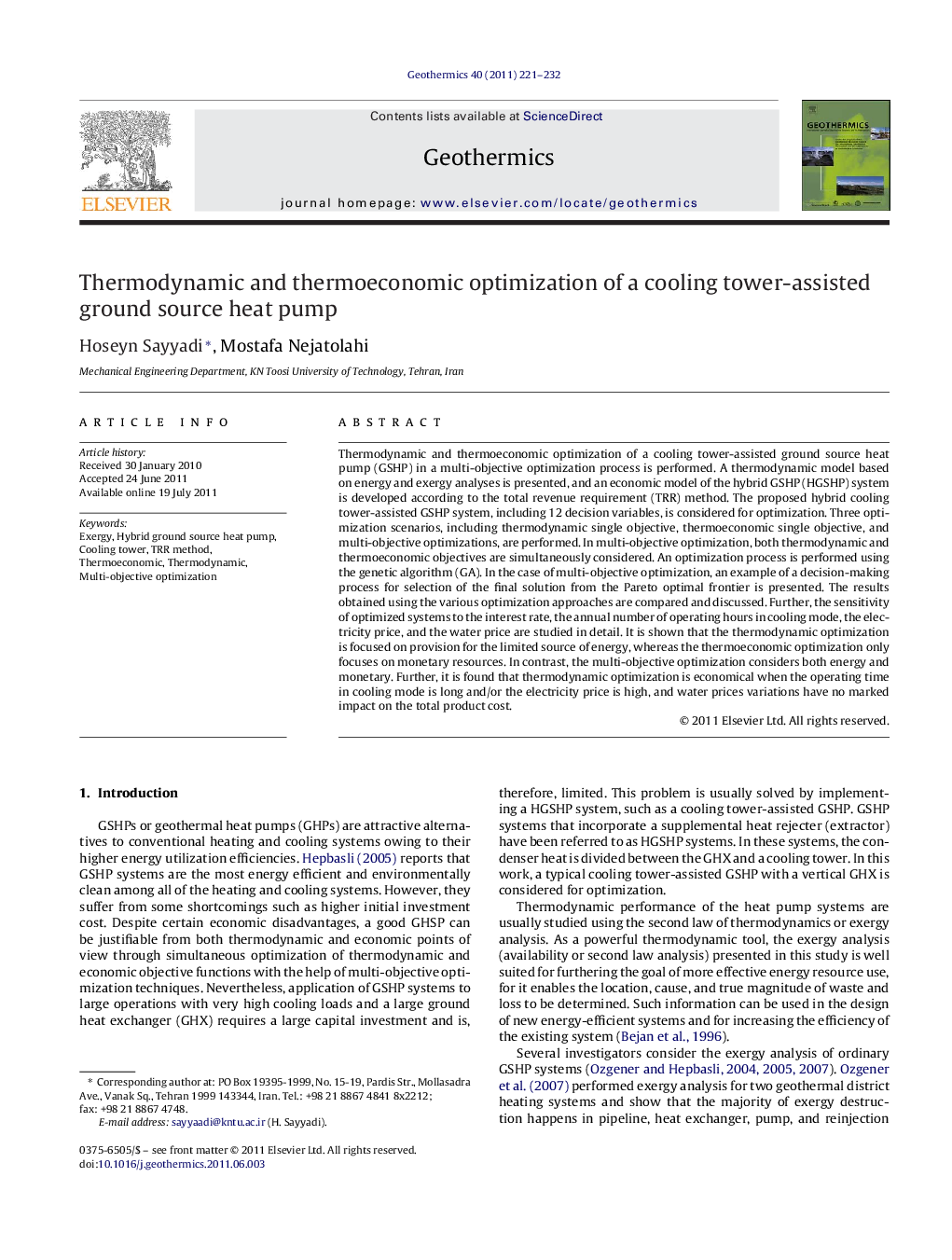| Article ID | Journal | Published Year | Pages | File Type |
|---|---|---|---|---|
| 1742542 | Geothermics | 2011 | 12 Pages |
Thermodynamic and thermoeconomic optimization of a cooling tower-assisted ground source heat pump (GSHP) in a multi-objective optimization process is performed. A thermodynamic model based on energy and exergy analyses is presented, and an economic model of the hybrid GSHP (HGSHP) system is developed according to the total revenue requirement (TRR) method. The proposed hybrid cooling tower-assisted GSHP system, including 12 decision variables, is considered for optimization. Three optimization scenarios, including thermodynamic single objective, thermoeconomic single objective, and multi-objective optimizations, are performed. In multi-objective optimization, both thermodynamic and thermoeconomic objectives are simultaneously considered. An optimization process is performed using the genetic algorithm (GA). In the case of multi-objective optimization, an example of a decision-making process for selection of the final solution from the Pareto optimal frontier is presented. The results obtained using the various optimization approaches are compared and discussed. Further, the sensitivity of optimized systems to the interest rate, the annual number of operating hours in cooling mode, the electricity price, and the water price are studied in detail. It is shown that the thermodynamic optimization is focused on provision for the limited source of energy, whereas the thermoeconomic optimization only focuses on monetary resources. In contrast, the multi-objective optimization considers both energy and monetary. Further, it is found that thermodynamic optimization is economical when the operating time in cooling mode is long and/or the electricity price is high, and water prices variations have no marked impact on the total product cost.
► Thermodynamic and thermoeconomic optimization of a cooling tower-assisted GSHP is performed. ► Objective functions based on thermodynamic and economic analysis are obtained. ► Three optimization scenarios, including thermodynamic single objective, thermoeconomic single objective, and multi-objective optimizations, are performed. ► The results obtained using the various optimization approaches are compared and discussed. ► Sensitivity of optimized systems is studied in detail.
